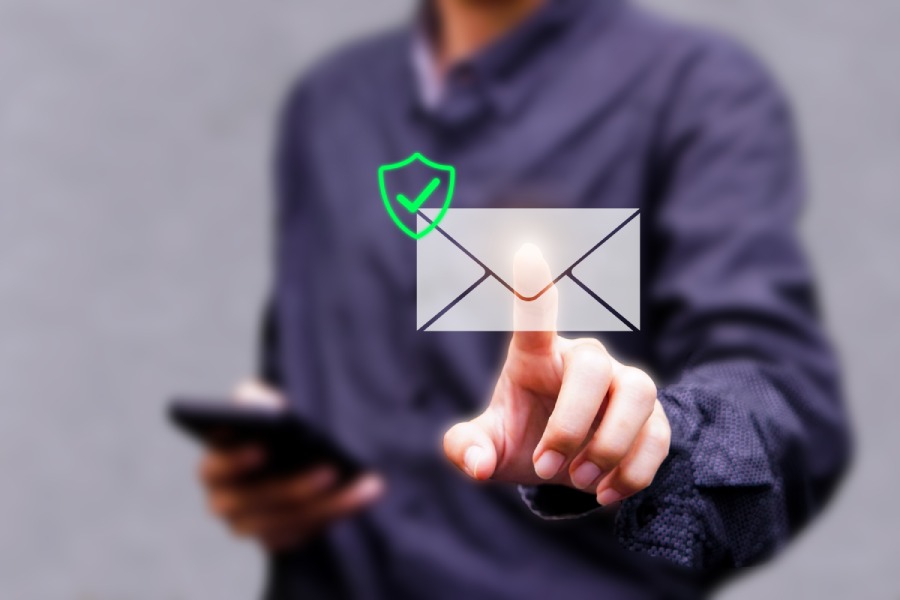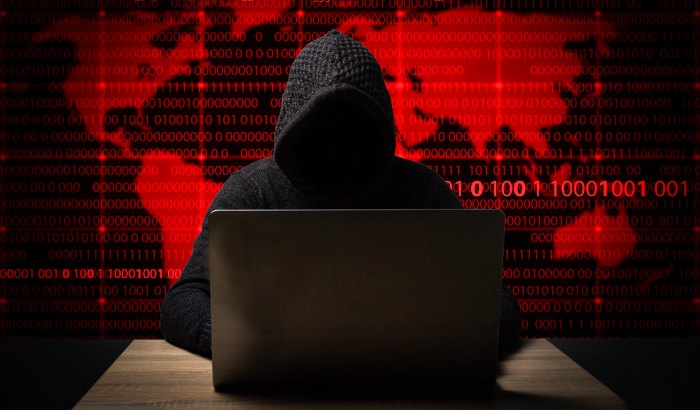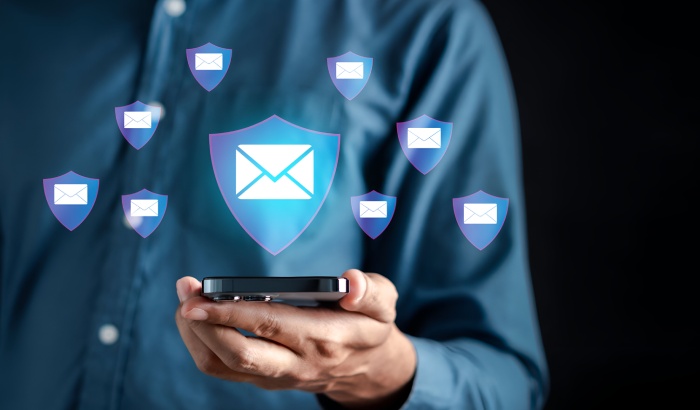BIMI enhances email security by allowing brands to display their logos alongside authenticated emails, which helps recipients easily identify legitimate communications and reduces the risk of phishing attacks. To implement BIMI effectively, brands must first establish DMARC (Domain-based Message Authentication, Reporting & Conformance) to prevent domain spoofing and ensure that their emails are properly authenticated.
What is BIMI?
BIMI, or Brand Indicators for Message Identification, serves as a powerful tool in the world of email communication. This innovative email specification allows brands to prominently display their logos alongside authenticated emails in users’ inboxes, effectively changing the way we recognize legitimate communications. By showcasing a brand’s logo, BIMI enhances visibility and reinforces trust. When you see a familiar logo accompanying an email, it’s like seeing your favorite restaurant’s name flashing on a neon sign—it draws you in and assures you that the message came from a trustworthy source.
Imagine opening your inbox and finding an email from your bank, but instead of that reassuring logo, there’s just a plain text message! It would make anyone second-guess whether that email was a scam, right? BIMI addresses that by creating a more reassuring atmosphere for users. Through this enhanced branding, BIMI helps prevent phishing attempts by making it easy for recipients to identify real communications from businesses they trust.
But how does BIMI manage these remarkable feats? Let’s explore its core components.
At its foundation, BIMI operates in conjunction with existing email authentication protocols like DMARC (Domain-based Message Authentication, Reporting & Conformance), SPF (Sender Policy Framework), and DKIM (DomainKeys Identified Mail). Companies need to establish these security measures first before they can implement BIMI. By tying together these systems, businesses protect their reputation while fostering peace of mind among customers.
The requirement of using DMARC is particularly important because it works hand-in-hand with BIMI to ensure that no one can spoof or impersonate a brand. This means that when an email shows up in your inbox with the company logo, you can trust it genuinely comes from that business and hasn’t been tampered with along the way.
To further solidify this trust factor, companies must host a verified SVG (Scalable Vector Graphics) version of their logos in a publicly accessible location through DNS TXT records. This verified logo appears next to trusted messages, making them more recognizable amidst unsolicited correspondence.
Recent statistics reveal that over 50% of organizations employing BIMI observed significant improvements in their email engagement rates. As consumers become increasingly wary of scams and spam emails, providing visual cues like logos reassures them about the legitimacy of what they’re opening.
Adopting BIMI is not just a trend; it’s predicted that by 2026, approximately 75% of major brands will incorporate it into their email security strategy. This comprehensive approach empowers organizations to stand out while simultaneously offering vital protection against cyber threats. Through its combination of brand visibility and enhanced security, BIMI represents a promising frontier in email communication and authentication.
Understanding these foundational aspects lays the groundwork for appreciating how much value this system can bring to both businesses and consumers alike as part of contemporary email practices.
Key Benefits of BIMI
One of the most compelling aspects of BIMI is its role in enhancing security against phishing attacks. By allowing brands to display their verified logos alongside authenticated emails, consumers can easily distinguish between legitimate messages and potential scams. This visual cue acts as a shield that reassures recipients they are opening emails from trusted sources.
As a result, organizations utilizing BIMI have reported more than a 30% reduction in phishing attempts targeting their domains. This not only protects the brand but also provides peace of mind for customers, fostering trust.
Beyond phishing prevention, adopting BIMI can significantly improve deliverability rates. Emails that are correctly authenticated using BIMI enjoy up to a 15% higher deliverability rate compared to those without this enhancement. When emails land in a recipient’s inbox rather than their spam folder, the chances of engagement rise dramatically. This is vital for businesses looking to increase interaction with their audience because when emails reach the intended destination and are recognizable, they are far more likely to capture attention.
The benefits don’t stop there; brands utilizing BIMI have also reported enhanced open rates—some studies indicate improvements between 10-20%. This increased visibility means that subscribers are more likely to interact with emails that present clear branding because familiar logos help cement recognition and inspire confidence.
Furthermore, it’s essential to recognize that alongside these practical benefits, implementing BIMI can also have considerable cost-saving implications.
By enhancing email security and improving engagement metrics, brands can substantially reduce costs associated with email fraud and phishing remediation—up to 25% in some cases. Considering the financial impact of phishing attacks on organizations, the cost-effectiveness of maintaining strong email security measures cannot be overstated. It makes fiscal sense to invest in an infrastructure that protects both the company’s reputation and its bottom line.
The dynamics of email communication are changing rapidly. Understanding how this specific protocol enhances overall security will further illuminate the necessity for its adoption.
How BIMI Secures Emails
By preventing email spoofing, BIMI ensures that recipients can trust the emails they receive. It enhances the overall security of your email communications and plays a crucial role in maintaining brand integrity. With ever-evolving threats from cybercriminals, businesses must find effective means to protect their identities online, and this is where BIMI truly shines.
BIMI functions in tandem with existing email authentication protocols like DMARC (Domain-based Message Authentication, Reporting, & Conformance). To understand this relationship better, think of DMARC as the bouncer who checks ID at a club, ensuring only verified guests can enter. BIMI, on the other hand, operates like the VIP section of that same club — showcasing the brand logo to those validated guests. This means that when individuals receive an email from a verified source, they not only see who sent it but also get a clear visual marker that indicates authenticity.
Imagine receiving an email from your bank. Within that email, you’d see the institution’s logo prominently displayed next to the message thanks to BIMI. This added layer of verification assures you that the message is indeed legitimate and not a phishing attempt crafted by some nefarious individual posing as your bank. For instance, banks utilizing BIMI make their emails easily distinguishable from fraudulent ones, effectively fortifying against phishing attempts from impostors trying to leverage branding confusion.
By allowing brands to showcase their logos alongside emails, BIMI offers not just aesthetic enhancement but a tangible security benefit that builds customer confidence while simultaneously deterring scamming efforts.
As we move forward with practical implementation approaches for this valuable tool, understanding its integration with DMARC will provide clarity and enhance your email strategy significantly.
Steps to Implement BIMI
The process of implementing BIMI (Brand Indicators for Message Identification) might seem complex at first glance, but breaking it down into manageable steps can simplify the task significantly. The very first step begins with ensuring that your domain is DMARC-compliant. This involves configuring other authentication methods like SPF (Sender Policy Framework) and DKIM (DomainKeys Identified Mail). By doing this, you’re taking crucial measures to protect your emails from being spoofed or forged. In fact, organizations with a solid DMARC setup report a remarkable 75% improvement in email deliverability. So, consider this a fundamental building block of your email security strategy.
Once you’ve secured your domain through DMARC, it’s time to shift focus to creating a BIMI record.
A BIMI record is a piece of information that needs to be published in your domain’s DNS settings. Specifically, it’s formatted as a TXT record that directs to where your SVG logo file is stored online. An example of what this might look like is:
v=BIMI1; l=https://example.com/logo.svg;
This simple act not only marks your emails with your brand logo but also enhances the visibility of legitimate communications in recipients’ inboxes.
Next up is obtaining a Verified Mark Certificate, commonly referred to as a VMC.
This certificate serves as proof of ownership for the logo you wish to use in your emails and helps establish trust with email clients. To acquire a VMC, you’ll need to go through recognized entities like Digicert or Entrust Datacard. While these certificates typically come at a cost—ranging from $1,500 to $3,000 annually—it’s an investment well worth making since it adds another layer of credibility to your communications.
After acquiring the VMC, testing and validation come into play.
You’ll want to ensure that everything is set up correctly by utilizing tools like BIMI Inspector. These tools will help you check if your BIMI record is properly configured and can provide insights into any errors that might be affecting its performance. Testing at this stage ensures you’re not just playing with theory but actively contributing toward a reliable branding strategy.
Finally, maintaining and monitoring your BIMI implementation is crucial for long-term success.
Regularly checking DMARC reports gives you insight into how well your emails are being received. Additionally, verifying that your brand logo displays correctly will help you catch any issues early on. Here’s where diligence pays off: consistent monitoring not only enhances the safety of your communications but also keeps boosting brand recognition over time.
As we examine these implementation steps closely, it’s essential to recognize the hurdles that may arise and how best to navigate them effectively.
Common Challenges
One of the primary challenges in implementing BIMI is achieving effective DMARC (Domain-based Message Authentication, Reporting & Conformance) policy enforcement. This process can be a technical maze for many organizations. Smaller businesses often grapple with the complexities of configuring these essential email authentication protocols. The lack of resources or expertise may lead them to struggle with full DMARC compliance and require assistance from IT support services, straining their budgets. Overcoming this hurdle is essential because without stringent DMARC implementation, the benefits of BIMI—such as brand visibility and security—are compromised.\
Cost isn’t the only concern; there’s also the challenge of acquiring Verified Mark Certificates (VMC). VMCs serve as endorsements of trademark ownership and are integral to leveraging your logo effectively within BIMI-enabled emails. However, the financial implications can be daunting, especially for startups or small businesses already facing tight financial constraints. These companies often hesitate to obtain these certificates, weighing their potential return on investment against budget limitations.
Additionally, many organizations report having up-to-date logos as a common issue. Logos must be accurately reflected in BIMI records, and failing to maintain those records could lead to outdated or incorrect representations in recipients’ inboxes. Companies that do not keep their branding fresh risk losing, rather than enhancing, their credibility.
Another significant problem arises from DNS (Domain Name System) record configurations. A staggering 40% of businesses experience complications due to incorrect DNS settings when trying to display their brand logo effectively through BIMI. This situation can result in frustrating delays and could lead to a complete failure of the BIMI initiative if configurations aren’t aligned properly.
Moreover, the integration of BIMI with existing email authentication protocols like SPF (Sender Policy Framework) and DKIM (DomainKeys Identified Mail) comes with its own set of challenges. About 25% of organizations encounter issues in melding these systems seamlessly. They often find that achieving coherence between their various security measures requires a level of technical knowledge they may not possess readily.
Recognizing these challenges is just the beginning; organizations must also strategize effectively to navigate these obstacles while ensuring the integrity and effectiveness of their email systems. As we explore what lies ahead, it’s essential to consider how emerging developments will shape the future landscape of email security and authentication.
Future Trends in Email Authentication
The landscape of email authentication is set for significant changes as technology continues to advance. One of the most notable trends is the rising adoption of Brand Indicators for Message Identification (BIMI). This trend isn’t limited to just a handful of providers; more platforms like Gmail and Yahoo! are expected to join the movement, allowing businesses to showcase their logos alongside verified emails. According to a study conducted by Cisco, about 70% of large enterprises are gearing up to implement BIMI by 2028. This remarkable statistic signifies a concerted effort among organizations to reinforce their brand identity while enhancing security.
But what does this mean for you? For marketers and businesses, having logos visible in recipients’ inboxes bolsters brand trust, significantly improving email open rates. Imagine sending an email with your personalized logo, standing out amidst a sea of plain text messages—it could be the deciding factor for potential customers sifting through countless promotions.
Moreover, futurists speculate that the evolution of BIMI might soon include capabilities such as animated logos or real-time data indicators that signal whether an email is legitimate or fraudulent. With these advancements, companies could provide immediate visual cues regarding their communication authenticity, thereby further empowering recipients to make informed choices.
Expected Changes in Authentication Protocols
As part of these exciting developments, users can also expect enhanced criteria surrounding Verified Mark Certificates (VMC), which ensure only approved entities can showcase their logos via BIMI. This increased rigor in certification processes means that businesses may face higher costs associated with validation, but this expense is justified through the heightened credibility it connotes. Organizations must prepare for these adjustments; remaining vigilant about compliance will be key in retaining consumer confidence.
Additionally, as the digital environment becomes increasingly complex, advanced authentication protocols will begin collaborating with BIMI.
Emerging protocols may include:
- Enhanced DNS Security: Strengthening domain validation efforts can help prevent domain spoofing.
- Multi-Factor Authentication (MFA): Pairing BIMI with MFA creates an additional layer of protection against unauthorized access.
- Adaptive Authentication Systems: These systems leverage user behavior data to differentiate between legitimate activity and potential fraud.
Adapting to these trends in email authentication isn’t just a matter of staying current; it’s an essential strategy for protecting your organization’s communications moving forward. By being proactive today, you’ll cultivate fortified email practices that bolster your brand identity and safeguard your stakeholders from potential threats tomorrow.


